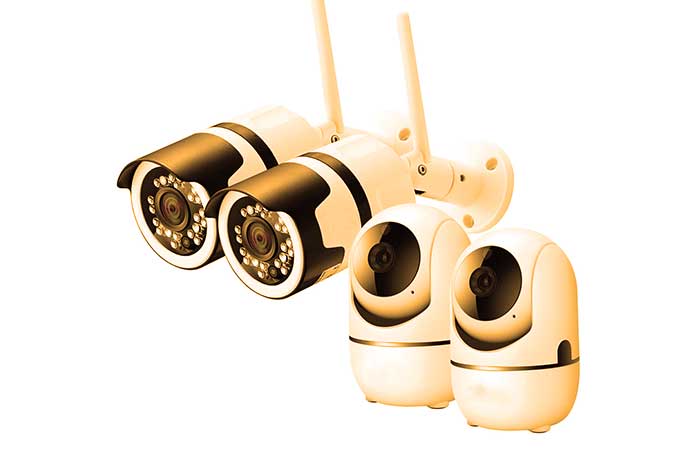Whether you want to protect your property from theft, monitor the activities of your children, or keep an eye on your pets, security cameras provide a reliable and efficient surveillance solution. There are endless advantages of CCTV cameras. When it comes to selecting suitable security cameras, one crucial decision to make is whether to opt for indoor or outdoor cameras. Well, this completely depends on your requirement. Still, to give you a clear picture and help decide clearly, in this blog post, we will explore the key differences between indoor and outdoor security cameras, their uses, benefits, and factors to consider when choosing between the two. Let’s jump!
Indoor Security Cameras: Uses and Benefits
Indoor security cameras are specifically designed to monitor the interior spaces of your home or office building. These cameras are commonly used in residential homes, offices, retail stores, and other indoor environments. The primary purpose of indoor cameras is to capture footage of areas such as entrances, hallways, staircases, and specific rooms. By placing indoor cameras strategically, you can closely monitor activity within your premises.
One of the significant benefits of indoor cameras is their ability to provide detailed and high-resolution footage. Since they are usually placed in well-lit indoor spaces, these cameras can capture clear images and videos, enabling you to easily identify people and objects. Indoor cameras are also less exposed to harsh environmental conditions, resulting in fewer maintenance requirements and a longer lifespan. Moreover, if you have a pet or a baby, going ahead with an indoor camera will help you a lot.
Outdoor Security Cameras: Uses and Benefits
Outdoor security cameras, as the name suggests, are designed to withstand the elements and monitor the exterior areas of a property. These cameras are commonly used to monitor entrances/exits, driveways, gardens, parking lots, and other outdoor spaces. Outdoor cameras are built with weatherproof housing to protect them from rain, snow, dust, and extreme temperatures. This durability ensures that they continue to function in various weather conditions.
One of the primary advantages of outdoor cameras is their wider coverage area. These cameras typically have a larger field of view, allowing you to monitor all outdoor spaces with fewer cameras. Outdoor cameras also often feature advanced night vision technology, enabling them to capture clear footage even in low-light or complete darkness. Additionally, outdoor cameras are equipped with features such as motion detection and infrared LEDs, enhancing their ability to detect and record any suspicious activity.
Factors to Consider When Choosing
When deciding between indoor and outdoor security cameras, several factors should be taken into consideration. First, determine the specific areas you want to monitor and identify whether they are indoor or outdoor spaces. If you primarily need surveillance indoors, then indoor cameras will be the ideal choice. However, outdoor cameras are the better option if you require monitoring of outdoor spaces, such as driveways or gardens.
Also, think about the desired field of view. If you need to monitor a smaller, more specific area, an indoor camera with a narrower field of view will suffice. However, if you want to cover a larger outdoor area, an outdoor camera with a wider field of view will be more suitable.
Also Read: Best Smart Surveillance Cameras



